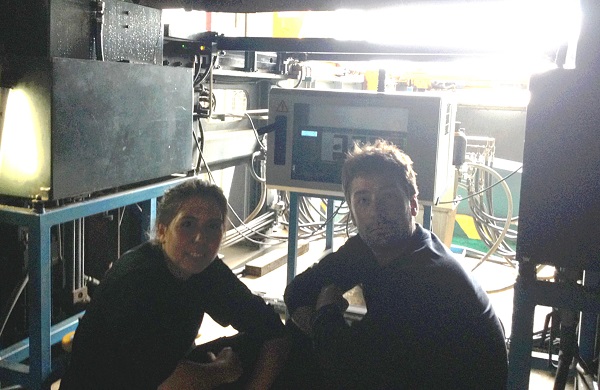Ivan Castro and Iratxe Aizpurua | IDEKO
11th May 2015
In the frame of an R&D project with the CEA toward EMAT’s development, IDEKO is using a Beta version of CIVA software to help build the developments. They take the opportunity of their visit in Saclay to visit EXTENDE’s premises.

Dear Mr. Castro, you have bought a CIVA license in 2013, UT and ET modules. As far as I understood, you are using EMAT probes in R&D projects. Could you please let us know which kind of EMAT probes you are simulating and for which kind of application?
Well, the idea was to do “phased-array EMAT”. At first, the applications developed were inspection solutions with a single EMAT probe (mono channel), that lead us to use only one channel at the same time, but then, the idea was to be able to do iteration between the different coils to succeed to change the direction of the beam and to focus it. Slightly like UT phased array capabilities but for EMAT probes.
What do you think about EMAT functionalities in CIVA? And what would you like to be added in CIVA for your application?
Your question is a bit tricky because, what we would like to include in the commercial version of CIVA are the capabilities of the development versions (Beta versions). That is what we are discussing at the moment with the CIVA team development at CEA. The applications that we have in mind are on austenitic steel inspections (these steels have slightly different properties that makes suitable to be inspected by EMAT technology).
Excuse-me, could you precise what are the functionalities of the Beta versions?
The Beta versions allow us to excite each coil in an independent way, which means, applying some delay laws to the different coils. The problem is that the Beta versions are unstable, this is the main reason why we are expecting the integrations of the current new features of EMAT capabilities in the commercial release.
You also mentioned the capability to be able to inspect complex geometry specimen?
Yes, of course, today EMAT in CIVA are only used in planar and cylindrical components.
For now, for example, we would like to develop EMAT probes for curved specimen. In this perspective, it will be really interesting and helpful to model complex geometry specimen in CIVA in order to perform a probe design for our applications.
We are currently running some ET simulations and we would like to go one step further of the field of railways inspections thanks to Eddy Currents testings. It would be interesting to be able to add coils on flexible probes (it is the new trend those times) and be able to simulate EMAT probes for these applications thanks to CIVA. With EMATs we would like to have the same design capability than in the “standard” UT module. The Beta versions propose more capabilities than the commercial version but still have some limitations in regards to the specimen, (small bugs). Our idea would be to improve the design capability in EMAT solutions in CIVA. One small thing that we did, as we were discussing about it with the CEA, we developed some applications, let call them “mono channel”, with standalone coils, using an equipment of one channel only, multiplexing and using probes with several coils. This, we can do it in the commercial version of CIVA.
So the goal of the collaboration project with the CEA is to integrate the developments of the Beta versions inside the commercial one for complex geometries specimen, right?
The first application, in which we noticed that people were applying EMAT, is under austenitic steel inspections, because EMAT systems produce horizontally polarized shear waves which are less affected by austenitic weld metal than conventionally used vertically polarized shear waves are. We will take advantage of the EMAT on this kind of material, and with the capability to design probes we would designed phased array EMAT.
Thank you, I also wanted to ask you, for which kind of application are you using CIVA (other than EMAT)?
We have developed an application for the railway sector (wheel rim and wheel webs inspections) in order to control defects inside the wheel. We realized the inspection with M2M equipment (until then, we were using another type of acquisition system) and the truth is that it came up quite good!
We also did some inspections in the frame of an European project called AxleInspect (www.axleinspect.eu) along with TWI, ZUT (a polish university), Vermon, Phoenix ISL, DANOBAT and BBRail as final user. One of the main goals is to design a matrix probe that will be able to improve the inspection of railway axles in maintenance depots.
Sometimes we also provide consulting studies to determine the phenomenon that occurs during the inspection. For example we launched a CIVA simulation to define the attenuation of a specific material taking into account experimental acquisitions. We obtained satisfactory results and change the inspection improving the capability to detect defects.
Did you hear about the functionalities of the new CIVA analysis module, given in the frame of the purchase of CIVA UT?
We need to try it but we found it interesting. Honestly, we are not a production company so from our side, we will not use it a lot. But regarding simulation, we are convinced by CIVA and try to use it as soon as we can. Some things for which a lot of time was required before to get a result are faster now. I was using Abaqus during my thesis and you had to wait for several days to get a result.
